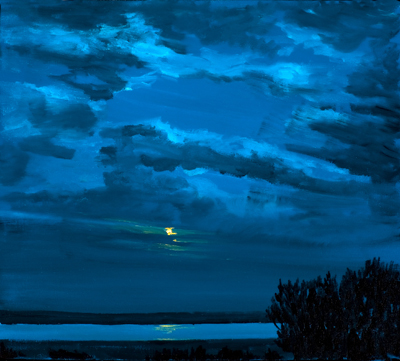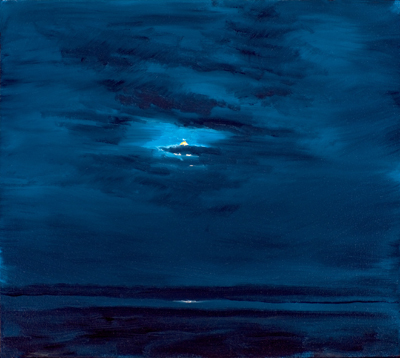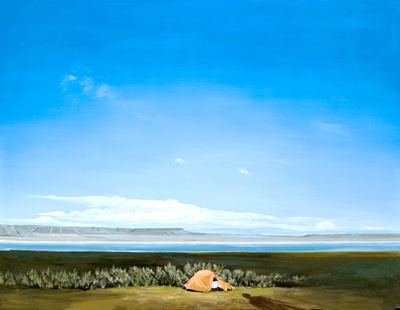 Michael Brophy’s paintings have good lungs. They expand to fill a sky with room left over for the land, which is frequently dark save for moonlight on water.
Michael Brophy’s paintings have good lungs. They expand to fill a sky with room left over for the land, which is frequently dark save for moonlight on water.


Charles D’Ambrosio described them best:
Most of Brophy’s landscapes are obviously wrecked, but there’s no nostalgia for the olden days, no melancholy, no sappy loss, largely because there’s also no initial shock. Ruin is painted as if it were eternal, as if there were nothing to recover, as if beauty persists, generous and spacious, even when the landscape of our longing does not.
The landscapes of our longing are back, both in moonlight and sunlight. For many painters, they never went away.
April Gornik paints big vistas as domestic interiors. Waterfalls on rocks look like cream pouring out of dark pitchers, and a stand of trees at night has a lacy edge. Alex Katz‘s twilight vistas look like billboards. Gayle Bard‘s rolling greens are immaculate, as if recently vacuumed. Elizabeth Sandvig‘s riotous abundance channels Fragonard. Joan Nelson‘s lost worlds could be carried in lockets. Robyn O’Neil‘s are medieval. Norman Lundin‘s muddy grounds are what you might see through the window of your car on a rainy day. Anselm Kiefer‘s wreckage marinates in the poisons of history.
Brophy’s landscapes wear their nerves on the outside of their bodies. A smear of his moonlight is like a dry cough. His trees have their ears pricked, waiting for the sound of an alien step. Remote but not austere, his landscapes reject the rare figures who attempt to move within them.
 At G. Gibson Gallery through Feb. 20.
At G. Gibson Gallery through Feb. 20.



Leave a Reply